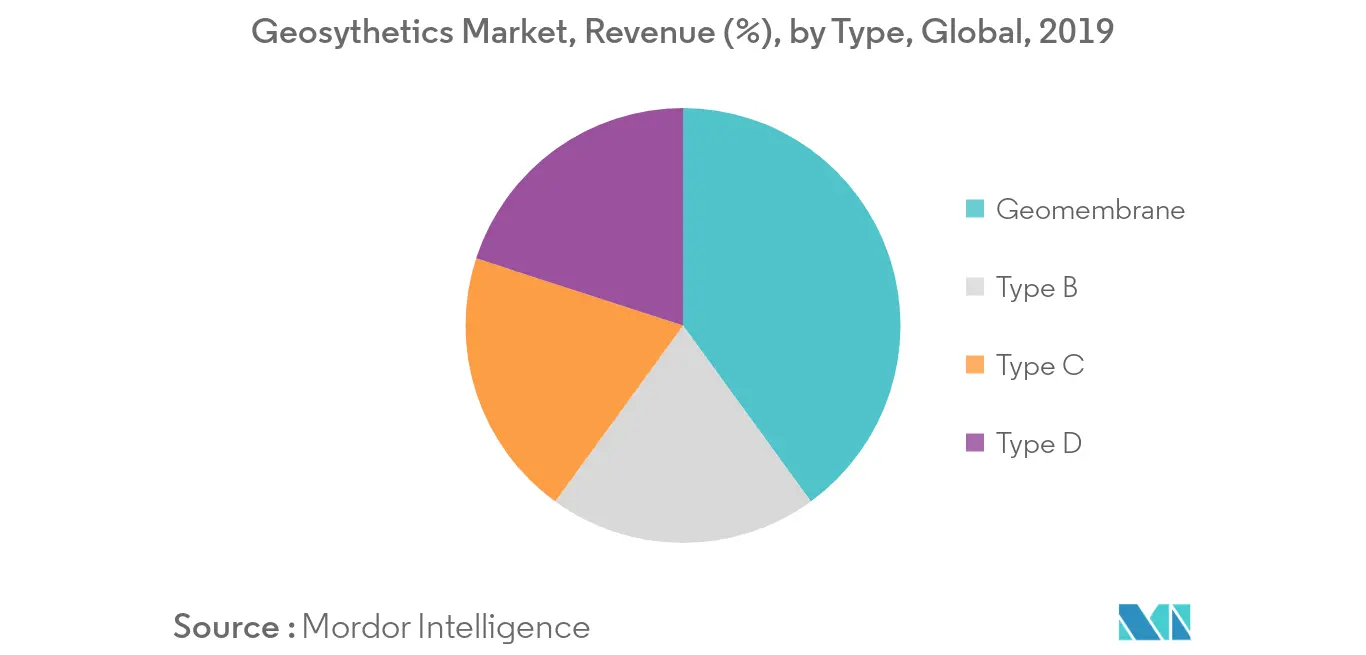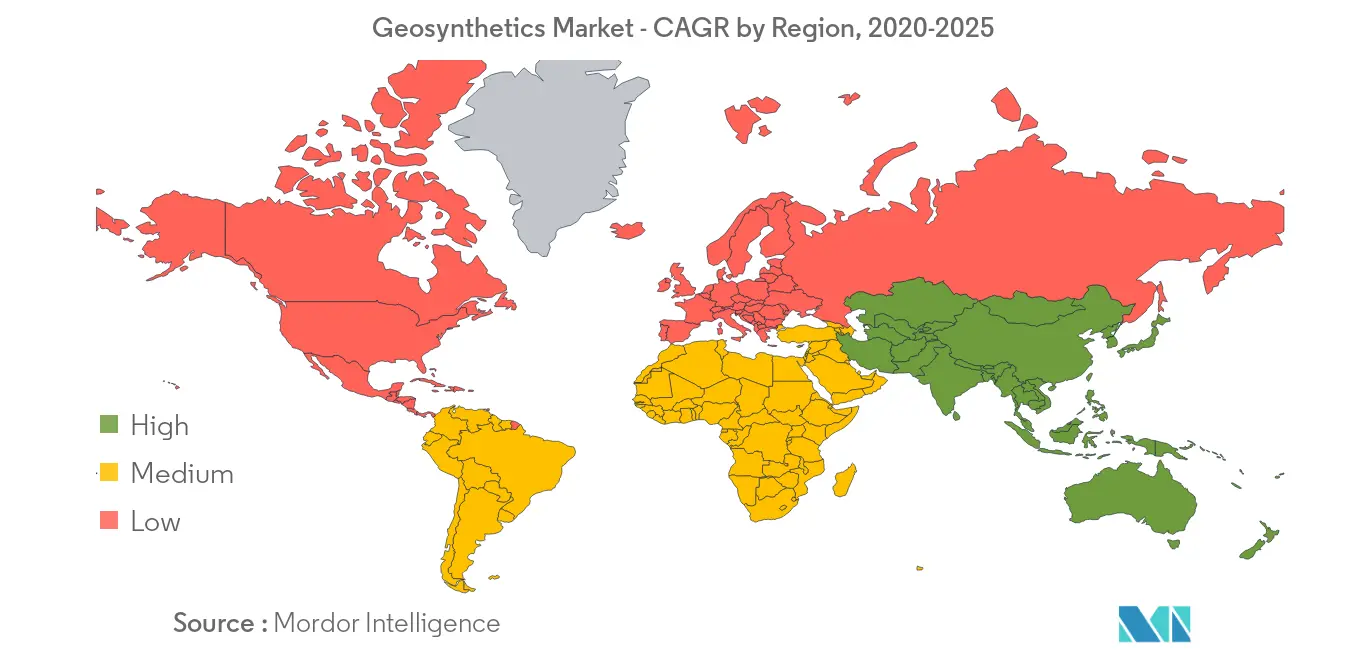Market Trends of Geosynthetics Industry
This section covers the major market trends shaping the Geosythetics Market according to our research experts:
Geomembranes to Dominate the Market
- Geo-membranes are thin, impervious sheets of polymeric material used primarily in landfill lining, canal lining, and tunnel lining applications. They are used in landfills, reservoirs, canals, and other types of containment facilities, serving as a barrier from waste containment.
- They are largely used in geotechnical, transportation, mining, agricultural, roads and highways, and various water containment applications.
- Increasing adoption of geo-membranes in wastewater management applications has largely increased the consumption of geo-membranes, in the past few years.
- The mining industry constitutes to be one of the fastest-growing industries for the consumption of geo-membranes, due to its properties, such as low permeability, high chemical resistivity, high-temperature resistivity, high tensile strength and elongation, high puncture resistivity, high durability, and high interface friction, making it highly suitable. These include chemical resistivity, UV resistivity, elevated temperature range, and low permeability.
- The demand for geo-membrane is also increasing in canal lining applications, due to the growing need for efficient usage of water and the remediate groundwater levels. Various countries in Asia-Pacific, such as China, India, and Uzbekistan, are generating the largest demand for geo-membranes to be used in the canal lining application.
- Asia-Pacific is expected to be the fastest growing geo-membrane market over the forecast period, facilitated by the booming infrastructure industry in emerging economies of the region. Countries, such as India, China, Thailand, and Indonesia, comprise of the key markets for geo-membranes in Asia-Pacific.
- Furthermore, the United States Environmental Protection Agency's (EPA) enforcement of lining coal ash sites has led to an increase in sales for the geo-membranes market. With rise in the lining of coal ash sites, lining solid waste sites have been on a rise in the United States. This has significantly boosted the demand for geomembranes.

India to Lead the Market Growth
- India is a growing economy and holds great potential for future market opportunities. The country witnessed a decline in its GDP to 5% in the quarter ending June 2019 - its lowest in five years, from 7.1% in 2018. The stagnation caused in the industrial output, greenfield investment, and flattened demand has led to a decline in the growth rate in the country. India's construction industry growth is estimated to have slowed to ~6.7% in 2019, according to data from the Ministry of Statistics and ProgrammeImplementation.
- Moreover, the outbreak of COVID-19 and its subsequent entry into India have led to a halt of operations in many sectors in the country. Construction and infrastructure sectors are estimated to witness the largest declines in terms of growth and outputs, owing to the lockdown called by the government for a brief period.
- Infrastructure sector plays a vital role in the growth and development of the Indian economy. The government of India has been emphasizing on expanding the infrastructure sector through continuous budget allocations and promoting foreign direct investments (FDI) into the industry (as shown in the graph). To augment India's infrastructure, the government has launched USD 1.4 trillion infra projects besides providing about USD 240 billion for transport infrastructure, with focus on infrastructure for economic development and 6,500 projects across sectors under National Infrastructure Pipeline (NIP) envisions ease of living for citizens. These new projects will include housing, safe drinking water, access to clean and affordable energy, health-care, educational institutes, railway stations, airports, bus terminals, metro and railway transportation, logistics and warehousing, irrigation projects, etc.
- The government has also been taking initiatives to attract FDIs in the manufacturing sector, to make India a manufacturing hub. The government is targeting an increase in the share of the manufacturing sector in GDP from 16% to 25%, by 2022. This will boost the need for geosynthetics for various applications in industrial buildings.
- Investments through private sector are expected to show moderate growth, owing to the temporary lockdown due to COVID-19 pandemic and other factors, such as diminishing overcapacity in some sectors, increasing stability in infrastructure projects, corporate deleveraging, cleaning of loan portfolios by banks, and implementation of the Goods & Services Tax (GST).
- Moreover, the automotive industry produced a total of 4,516,017 in 2019, a decrease of 12.2% over 2018. in addition, the automotive sales have also declined by almost 13% (during 2019) due to various factors such as adoption of BS-VI over BS-IV, increasing fuel prices, GDP slow down, COVID-19, emerging market for cabs, such as Ola and Uber.
- Overall, the market for geosynthetics in India is expected to increase during the forecast period.

